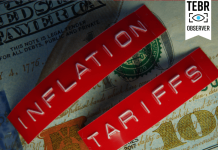Gender lens investing (GLI) is gaining momentum as investors recognise the urgency to contribute to gender equality while evaluating investment opportunities. The report “Empowering Women, Building Sustainable Assets” explores the state-of-the art of GLI, drawing from research data and interviews with institutional investors. The results evidence that GLI can drive transformative change and impact culture in the mainstream financial markets.
Gender lens investing (GLI) has emerged as a powerful tool for promoting gender equality in every phase of the investment process. Although the world is increasingly recognising the urgency to address the UN Agenda 2030, the Sustainable Development Goal (SDG) 5 on Gender Equality has been under-investigated so far. We are now finally observing that the world of finance is turning its attention to GLI as a means to advance both financial goals and the gender empowerment agenda.
The European Institute for Gender Equality, for instance, has underscored the significant economic gains associated with the promotion of gender equality, whose achievement, according to the latest estimates, could boost the European Union’s GDP by as much as 9.6%. This highlights the profound impact that gender equality initiatives can have on economic growth and prosperity.
Advancing gender equality in finance
The report “Empowering Women, Building Sustainable Assets” aims to shed light on the diverse landscape of GLI models and practices while addressing the challenges and contradictions they may pose to feminist agendas. The report emphasises the importance of strengthening GLI to foster inclusive and sustainable development that prioritises the needs of women and, more broadly, of minorities with respect to access to finance.
The study, conducted by Politecnico di Milano’s Tiresia, Bocconi University’s AXA Research Lab on Gender Equality and Phenix Capital, provides valuable insights into the current state of GLI. Data reveals that only 17.2% of funds place gender equality at the heart of their strategies. It is therefore evident that greater attention should be paid to gender considerations within impact investing frameworks.
The interviews, conducted with 22 institutional investors from all over the world, further illuminate the nuances of GLI practices and the challenges faced by financial providers. They also unveil the diversity of approaches characterising the GLI landscape, ranging from the use of gender issues as a risk mitigation approach to the strategic valorisation of such issues for the generation of social impact.
Delving deeper into the results, the report identifies the lack of a clear definition and, consequently, of unanimous awareness of this phenomenon. Unsurprisingly, the vagueness and opacity around the meaning of gender lens is making its adoption mostly unstructured and ineffective.
The importance of measurement
As the relevance of GLI has just started to emerge, enhanced measurement and transparency around its outcomes and impact are needed. Merely assessing financial performance is not enough to address the complex challenges of gender inequality. Rather, investors should combine financial results and impact measurement, with the aim of advancing gender equality and women’s empowerment.
While GLI has a clear potential to drive transformative change, evidence of its impact on gender equality remains largely anecdotal. As we move forward, it is essential to integrate gender issues more comprehensively into investment evaluation schemes. This means investors should move away from a performance-focused mindset and embrace one that leverages the use of finance to deliver systemic change. Accordingly, women’s economic empowerment should become an investment priority and come to encompass decent working conditions, work-life balance, equal pay and entrepreneurship opportunities. The willingness to finance initiatives that champion the role of women in traditionally male-dominated contexts is a key step to advocating an organisational change when it comes to entities demanding financial resources.
Welcome to the new impact-imperative era
By elevating gender issues to a political level and adopting new investment approaches, GLI can become a cornerstone of sustainable development efforts. It offers investors an opportunity to align their financial interests with broader societal goals, ultimately creating a more equitable and prosperous future for all. More importantly, raising the attention to GLI is a joint effort that should involve policymakers, investors and target investees. Indeed, top-down incentives and regulatory mechanisms that preserve the integrity of gender issues in the mindset of financial investors may encourage target investees to raise the level of equality and women empowerment.
In these terms, the joint effort on GLI can help disseminate the culture of impact in the mainstream mechanisms of the financial markets and ensure that investment approaches are not reduced to a tick-box exercise on gender issues, but serve the purpose of equality.
By embracing a more integrated and holistic approach, the economic system can leverage the capital of financial actors to create meaningful change and enable previously left-behind individuals to become the protagonists of the new impact-imperative era of world development.
About the Author
 Mario Calderini is full Professor at the School of Management of Politecnico di Milano, where he teaches Management for Sustainability and Impact. He is the director of Tiresia, the university’s research centre dedicated to impact, innovation, entrepreneurship and finance. In 2021, Apolitical named Mario Calderini one of the World’s Most Influential Academics in Government. He has been cabinet advisor to the Italian Minister of Innovation and senior advisor to several Ministers of University and Research.
Mario Calderini is full Professor at the School of Management of Politecnico di Milano, where he teaches Management for Sustainability and Impact. He is the director of Tiresia, the university’s research centre dedicated to impact, innovation, entrepreneurship and finance. In 2021, Apolitical named Mario Calderini one of the World’s Most Influential Academics in Government. He has been cabinet advisor to the Italian Minister of Innovation and senior advisor to several Ministers of University and Research.





































